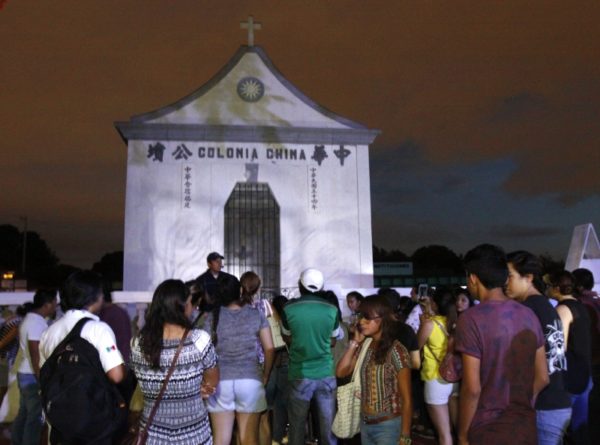Just like the Pére Lachaise cemeteries in Paris; La Recoleta, of Buenos Aires, and Saint Louis, of New Orleans, the General Cemetery of Mérida, offers guided visits for residents and tourists since 2013.
It was during the first edition of the Noche Blanca when the Cemetery opened its doors to the public at an unusual time: 7 pm. However, it was until October 2014 when the tour became customary every Wednesday night, all year round.
Declared in 2003 a Municipal Cultural Heritage, the cemetery was built on the former cattle hacienda of San Antonio X-Coholté, located on the old Camino Real to San Francisco de Campeche (better known today as Calle 66).
The cemetery was inaugurated on Nomember 3, 1821, only three days after the lieutenant Felipe Trejo was buried there, according to the historic document “Artistic manifestations of the city of the dead: The General Cemetery of Merida, Yucatan, Mexico“, written by Nicte-Há Gutiérrez Ruiz and Raúl Enrique Rivero Canto.
The tour, promoted by the Culture Department of the City of Mérida, is actually a walk through the historical past of Mérida between tombstones and crypts, mainly from the avenue of the mausoleums and unions.
It starts with the bust of Felipe Carrillo Puerto, in front of the wall where he and his eleven companions were shot on January 3, 1924, where it is still possible to see the holes left by the bullets.
Not far from that wall, lies the grave of the American journalist Alma Reed, fiancée of Felipe Carrillo Puerto, who, according to the chronicles, inspired the song “Peregrina“.
Then, the tour goes to the Mausoleum of the Association of Pensioners of Cordemex, which calls the tourists’ attention because the crosses simulate being made of henequen ropes.
Then comes the mausoleum of the Grand Lodge “La Oriental Peninsular“, also known as mausoleum of the Masonic Lodge, which includes in its details the Masonic symbols of the square and the compass, the letter “G”, a chain and the face of a goat.
The next part of the tour is the site where the deceased of the Chinese community of Yucatan are buried. It is a rectangular construction which is accessed by a central staircase with four steps. The mausoleum has inscriptions in its traditional calligraphy that make reference to the Chinese indignation by the attacks of Japan against its country in the year 34 of the period Zhong Hua Min Guo (1945).
The tour also includes several mausoleums that are eye-catching because of their different styles: colonial, art deco, Neocolonial, Neo-Gothic, among others.
Another important spots of the cemetery is the Unique Syndicate of Philharmonic of Yucatan, the Union of Drivers and Small Owners of Carriages of Yucatan, and the burial mounds of Guillermo Palomino and Delio Moreno.
The tour receives 50 people per night every Wednesday, and during the holidays and the Day of the Dead celebrations, up to 600 people take the tour at a time.
free admission
Access on Calle 66.
Source: yucatan.com.mx



